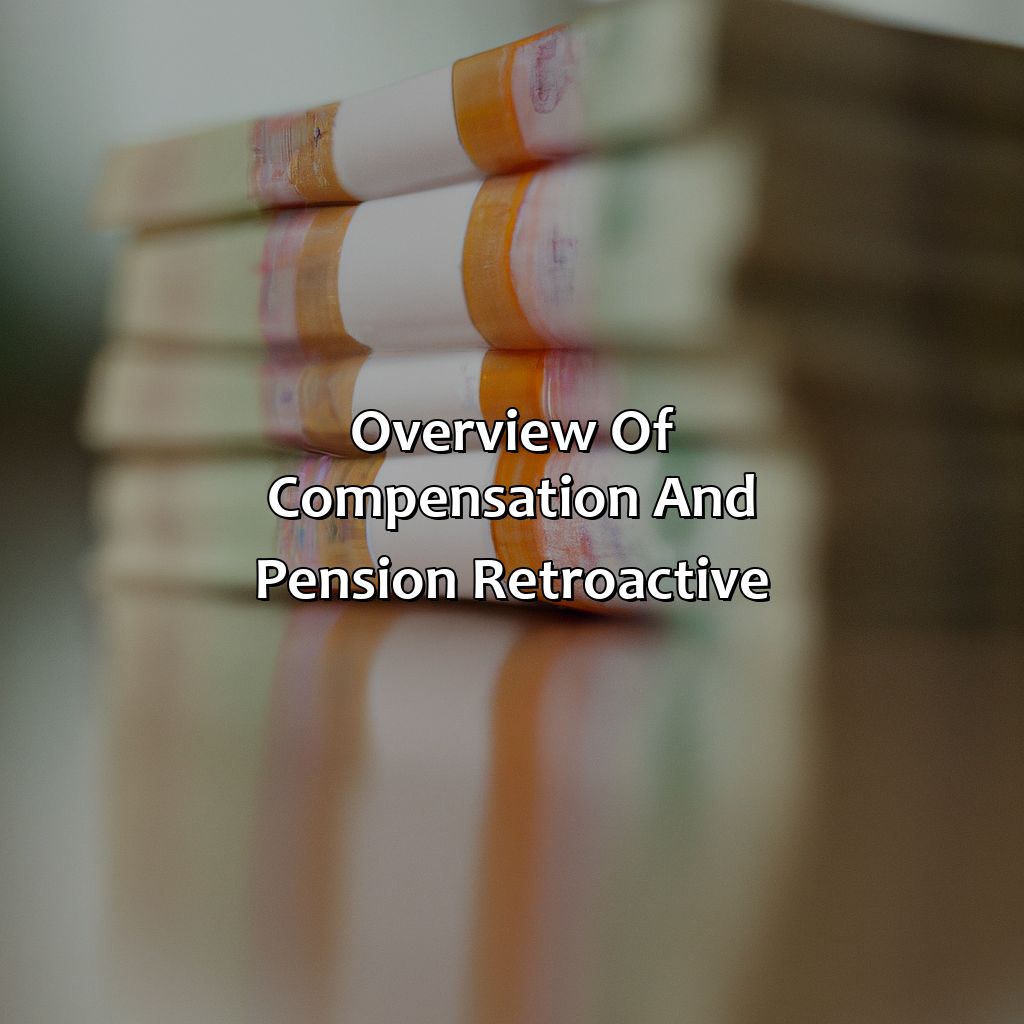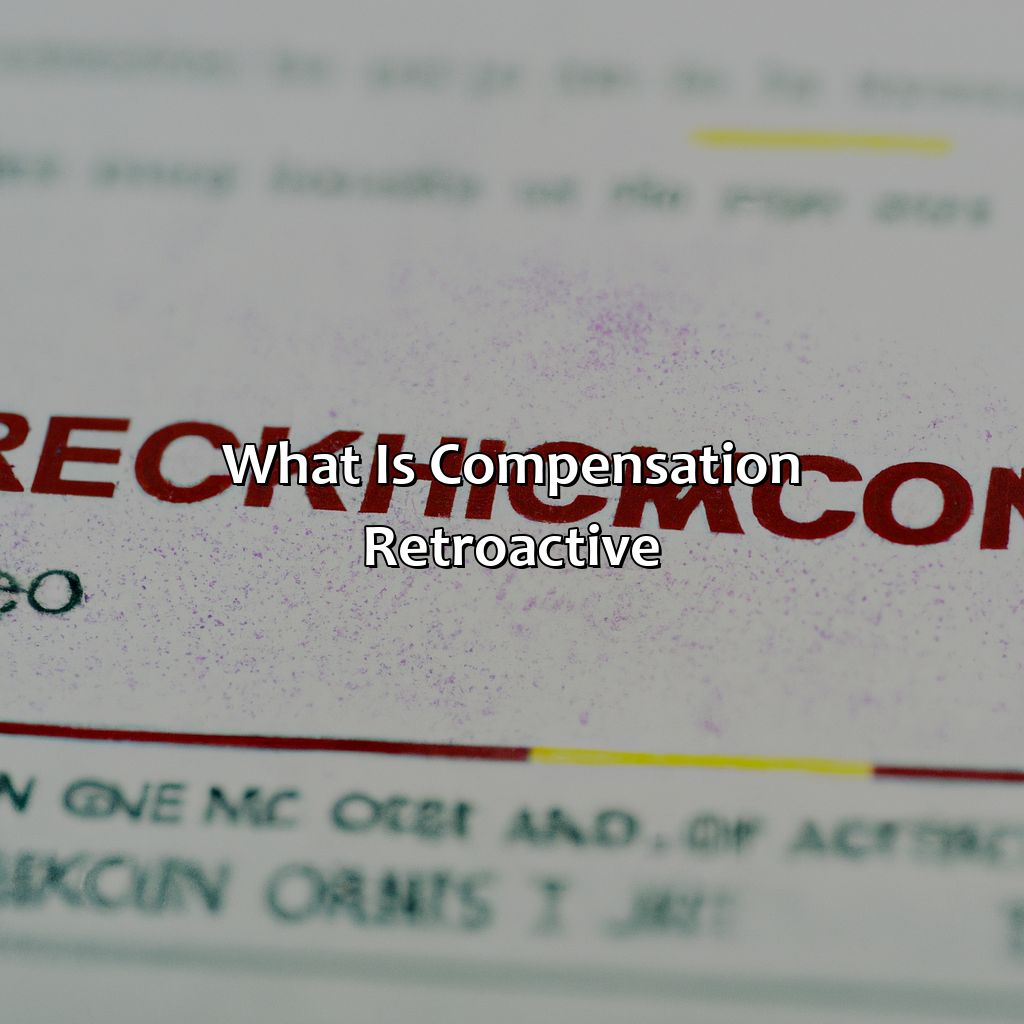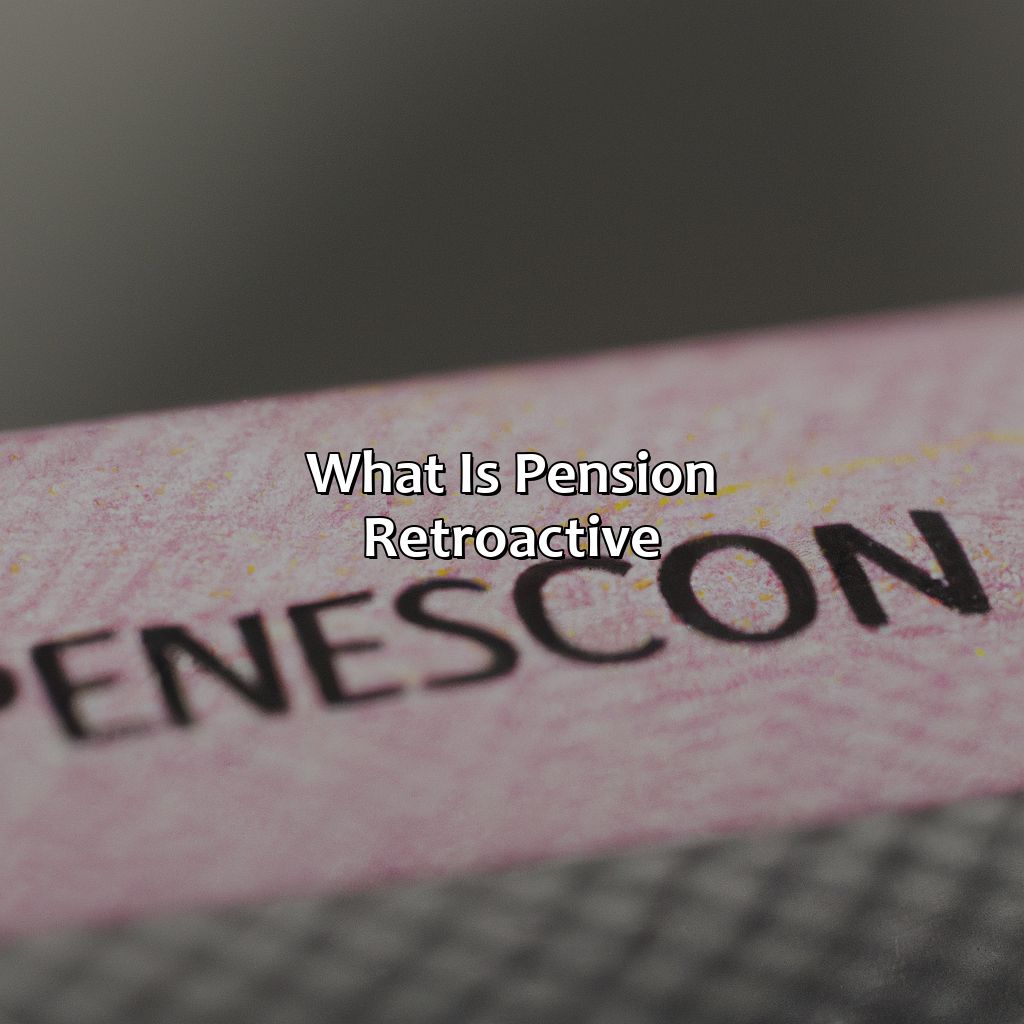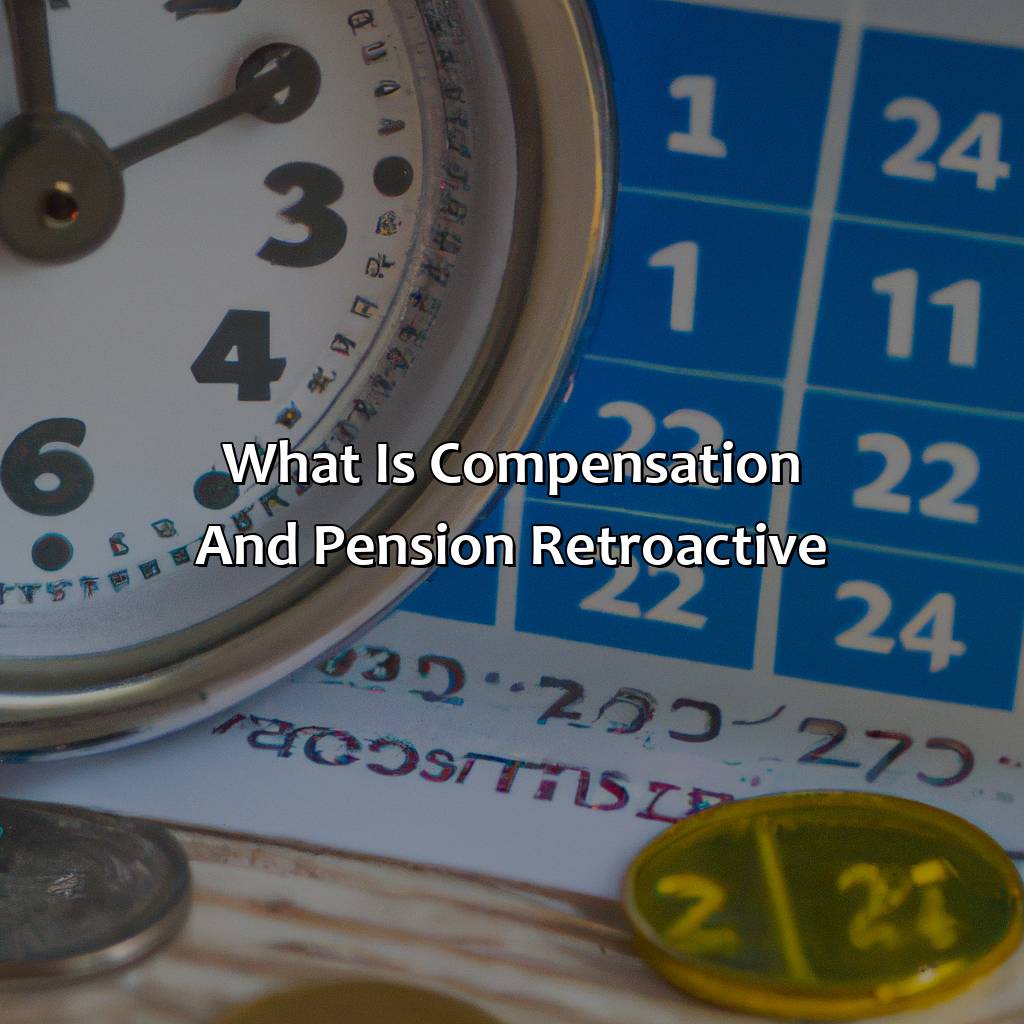What Is Compensation And Pension Retroactive?
Key Takeaway:
- Compensation and pension retroactive refers to payments made to veterans for a specified period of time for disabilities that occurred during their military service.
- Compensation retroactive is available for veterans who were not previously compensated for their disabilities or received a lower level of compensation than they deserved. The process involves submitting a claim for benefits with supporting evidence.
- Pension retroactive is available for veterans who are eligible for pension benefits and have not received them in the past. The process involves submitting an application with supporting documentation.
Have you been wondering what Compensation and Pension Retroactive is? You’re not alone. Let’s explore this important financial tool that can help veterans get the benefits they deserve.
Overview of Compensation and Pension Retroactive
Compensation and Pension Retroactive is a system that provides financial assistance to veterans for disabilities incurred during their service. It applies to individuals who have previously filed claims but were not granted benefits, and have now been awarded compensation and pension. The Retroactive payment is intended to compensate for the missed payments that were not granted in the past. The amount of payment depends on the disability rating and the duration of the missed payment. It is essential to file a claim as soon as possible to avoid missing out on any payments. It is also advised to have a lawyer help with the complicated process of filing a claim, as it can be time-consuming and challenging.
In addition to the above, it’s crucial to note the significance of having proper documentation of service-related injuries. The documentation can significantly impact the outcome of the claim and the amount of Retroactive payment received. It’s also essential to keep track of any medical reports that might detail the extent of the disability and the treatment given. This information can support a higher rating and thus, lead to a more substantial pension tax relief.
To ensure the process goes smoothly and quickly, it is critical to adhere to all the deadlines set by the Department of Veterans Affairs (VA). The VA will often set a deadline within a year of the disability examination for filing a disability claim, but exceptions may be made for specific cases. Failing to adhere to deadlines could result in missed payments, so being aware of these deadlines is crucial.
For more information about pensions, you can learn about final salary pension schemes.

Image credits: retiregenz.com by Yuval Jones
What is Compensation Retroactive?
To grasp compensation retroactive, comprehend its meaning and the criteria for qualification. Here we delve into the intricacies of it, with sub-sections providing a clear explanation. Plus, the process for eligibility is detailed too.

Image credits: retiregenz.com by David Jones
Definition and Explanation of Compensation Retroactive
Compensation and pension retroactive refers to the payment of benefits and allowances that should have been paid earlier but were not. In other words, it is the payment of past-due benefits for service-connected disabilities or injuries sustained while serving in the military.
Retroactive compensation can be received by veterans who file a successful claim or appeal for disability compensation after initially being denied. The amount of retroactive compensation awarded is based on the length of time between when the disability occurred and when the claim was granted. This process can take months or even years, but veterans may receive lump-sum payments that include all back pay owed. To understand the process better, you can read about what a pension credit is and how it works.
Pro Tip: It is important to keep detailed records of medical conditions and any injuries sustained while serving in the military to ensure a successful claim for retroactive compensation if needed. Learn more about compensation and pension exams to better understand the process and requirements.
Get the retroactive compensation ball rolling by meeting eligibility criteria – no time like the past to cash in on what’s owed to you.
Process and Eligibility for Compensation Retroactive
Compensation retroactive refers to the process of receiving compensation or pension benefits for a period that is prior to the current date. Eligibility for this depends on several factors, such as the type and severity of injuries or illnesses, when they occurred, and whether they are service-connected. Retroactive payments can be granted if it is found that a veteran has been underpaid or denied benefits they were entitled to. The process involves filing a claim with the Department of Veterans Affairs (VA) and providing relevant evidence.
To apply for compensation retroactively, veterans need to provide medical evidence that supports their claim, such as medical records and doctor’s opinions. They may also need to provide additional evidence, such as witness statements, lay statements, and supporting letters from family members or former colleagues. The VA will then review all the evidence provided before deciding whether to award retroactive payments.
If you want to know more about pension credits, you can read what guaranteed pension credits are.
It is important to note that not all claims for retroactive benefits will be approved. If there are gaps in the medical records or other inconsistencies in the evidence provided, VA may deny the claim. However, veterans have several options if they disagree with VA’s decision: they can appeal it through appeals modernization; request a higher-level review; file a supplemental claim; or pursue a traditional appeal. For more information about pension, you can read about pension rollover.
Looking back, getting a retroactive pension feels a lot like finding money in your coat pocket that you forgot about.
What is Pension Retroactive?
Let’s understand what pension retroactive is! We’ll discuss its definition and explanation. Plus, we’ll look into the process and eligibility for pension retroactive. Then you can decide if you could be entitled to it.

Image credits: retiregenz.com by Yuval Duncun
Definition and Explanation of Pension Retroactive
Pension retroactive refers to a payment made by the government or an organization for past periods of service. This compensation is paid retrospectively, covering the period that the recipient worked but has not been paid for previously. The purpose of this payment is to ensure that individuals receive what they are entitled to and are not disadvantaged due to administrative errors or delays in processing.
The process of pension retroactive involves a thorough analysis of employment records, which determines the amount owed to the worker. It considers factors such as length of service, salary history, and any changes in pension arrangements over time. Once determined, the payment is made in a lump sum or incrementally over a period.
A noteworthy point is that pension retroactive payments are tax-deductible which means that recipients may need to pay taxes on these payments depending on their income levels. However, it can also positively affect tax liability as certain deductions and credits may become available given the increased income. If you want to know more about pension adjustment, you can check out our website.
A true story that illustrates the impact of pension retroactive can be seen through an Army veteran. After leaving military service in 1979 due to injury, he did not make claims for an additional three decades due to miscommunication with VA officials about his eligibility for disability compensation and pension benefits. However, when re-evaluated using updated diagnostic codes and clinical descriptions 30 years later, he received significant back-pay from both programs covering three decades; this served as acknowledgment for his previous service rendered despite years lost without compensation.
Process and Eligibility for Pension Retroactive
Pension Retroactive is the process of receiving payment for pension benefits dating back to a previous eligibility date. Eligibility for this benefit varies with service period, type of pension and disability. Here are three simple steps to guide you in the process:
- Step One: Gather your paperwork. You will need your original pension claim and proof of eligibility documentation.
- Step Two: Submit your claim by mail or online at the Department of Veterans Affairs website. Be sure to provide all necessary paperwork as incomplete claims may be sent back.
- Step Three: Wait for a response from the VA regarding your retroactive payments. If approved, you may receive a lump sum or monthly installment payments.
It is important to note that Pension Retroactive payments are subject to time limitations and specific criteria. It is best to consult with a financial advisor or VA representative for more personalized guidance.
In addition, only certain types of pensions qualify for retroactive payments, such as wartime veterans’ pensions and survivors’ pensions. If you’re unsure about what retroactive payments are or if your pension plan offers them, you may want to learn more about final salary pensions.
According to Military.com, “As of December 1, 2021, the maximum annual Pension rate for single veterans with no dependents is $14,975“. If you want to know more about pension reforms and compensation and pension retroactive, it is important to consult with a financial advisor who can guide you through the process.
Five Facts About What Is Compensation and Pension Retroactive:
Compensation and pension retroactive payments are made to veterans who file claims for disability compensation. (Source: VA)
Retroactive payments are for past periods of time in which a veteran should have been receiving benefits. (Source: Veterans Law Group)
The amount of retroactive payment depends on the effective date of the claim and the rate of disability. (Source: MilitaryBenefits.info)
Veterans are entitled to receive retroactive payments dating back to their original date of eligibility, which is typically the effective date of their initial disability claim. (Source: Hill & Ponton, P.A.)
Retroactive payments can provide substantial financial support for veterans, especially in cases where the claims process has been delayed or denied. (Source: National Veterans Legal Services Program)
FAQs about What Is Compensation And Pension Retroactive?
What is Compensation and Pension Retroactive?
Compensation and Pension Retroactive refers to the payment of benefits to veterans who develop a disabling condition due to their military service. Retroactive payment means that compensation and pension benefits are paid retroactively to the date of a claimant’s effective date of entitlement. It is a lump-sum payment that covers any benefits that would have been paid if the disability had been rated at the correct level and effective date initially.
Who is Eligible for Retroactive Compensation and Pension Benefits?
Veterans who are eligible for retroactive compensation and pension benefits are those who have developed a service-connected disability that resulted from a military injury or disease. They may also have applied for benefits in the past, but their claim was denied initially. If the veteran later won their claim on appeal, they may be entitled to retroactive benefits.
What is the Effective Date for Retroactive Benefits?
The effective date for retroactive benefits is the date when the veteran’s disability was first deemed to be a service-connected impairment. This date is crucial because it determines how much money the veteran will receive in retroactive benefits.
How are Retroactive Benefits Calculated?
Retroactive benefits are calculated based on the rating given for the disability and effective date. The retroactive payment will be the difference between the rated level and the level used in the initial decision, multiplied by the number of months the difference has been in effect.
How Long Does It Take to Receive Retroactive Benefits?
The length of time it takes to receive retroactive benefits varies depending on factors like the complexity of the claim and VA workload. On average, it takes about 4-6 months for the VA to process a retroactive payment. However, this may take longer in some cases.
Where Can I Get Help Applying for Retroactive Benefits?
If you need help applying for retroactive benefits, you can contact your local VA office or a Veterans Service Organization. These organizations can help you navigate the claims process and ensure that you receive the benefits you are entitled to.
 Checkout this IRS Loophole
Checkout this IRS Loophole 
